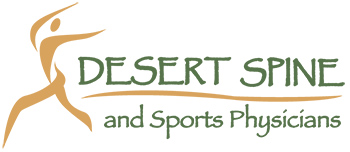
Dealing With Osteoarthritis: Non-Surgical Strategies for Joint Pain Management
Living with joint pain caused by osteoarthritis can be challenging, affecting not only your mobility but also your overall quality of life. At Desert Spine & Sports Physicians, we understand the impact of osteoarthritis and are here to guide you through effective non-surgical strategies for managing joint pain.
What is Osteoarthritis and How Does it Manifest?
Osteoarthritis is a degenerative joint condition characterized by the breakdown of cartilage, the protective tissue that cushions the ends of bones in a joint. As the cartilage wears down, bones may rub against each other, causing pain, stiffness, swelling, and reduced joint range of motion.
Osteoarthritis can affect the knees and various other joints, including the hips, shoulders, hands, and spine. The condition affects people of all ages, but there are certain factors that increase the likelihood of developing osteoarthritis. The risk of developing osteoarthritis rises as we get older, especially as we reach middle age and beyond. Those who have experienced a previous joint injury are susceptible to developing osteoarthritis. Other factors include obesity, genetics, and inflammatory joint diseases.
The most prominent symptom associated with osteoarthritis is pain. Other symptoms may include:
- Stiffness
- Swelling
- Limited range of motion
How is Osteoarthritis Diagnosed?
Accurate diagnosis of osteoarthritis is essential for developing a targeted treatment plan. Diagnosis often involves a combination of a detailed medical history, physical examination, and imaging tests such as X-rays and, sometimes, MRI scans.
Non-Surgical Treatment Options for Osteoarthritis
For many people, the pain and stiffness caused by osteoarthritis can disrupt day-to-day activities. While surgery is a treatment option in severe cases, there are many non-surgical methods that can provide significant relief from osteoarthritis symptoms.
Physical Therapy
Physical therapy, including beneficial aquatic therapy, is the cornerstone of osteoarthritis management. Skilled therapists work with patients to design tailored exercise programs that strengthen muscles around affected joints, improve flexibility and range of motion, and alleviate pain.
Medication and Supplements
Various medications, including analgesics such as Tylenol and nonsteroidal anti-inflammatory drugs (NSAIDs), may be prescribed to manage pain and inflammation associated with osteoarthritis. Evidence also supports using the herb turmeric for osteoarthritis pain and inflammation.
Lifestyle Modifications
Simple lifestyle changes can have a significant impact on managing osteoarthritis. Weight management, low-impact exercise, and joint protection techniques are key components of lifestyle modifications. In fact, losing one pound of weight results in four pounds of pressure being removed from the knees! Additionally, consider limiting those activities that exacerbate symptoms of osteoarthritis.
Hot or Cold Therapy
Applying heat or cold to affected joints can provide relief. Heat helps relax muscles, reduce joint stiffness, and improve blood flow, while cold therapy reduces inflammation and swelling and numbs the area.
Ultrasound-Guided Injections
Ultrasound-guided injections provide a valuable tool for healthcare providers in managing osteoarthritis, offering precision and safety. Injections performed under ultrasound imaging guidance offer several benefits in terms of targeted delivery of therapeutic agents to the affected joint.
- Accurate Localization: Ultrasound imaging allows the healthcare provider to visualize the internal structures of the joint in real time, ensuring precise localization of the needle to the target area within the joint. This precision is crucial when delivering medications directly to the affected joint.
- Targeted Delivery of Medications and Platelet-Rich Plasma: Ultrasound-guided injections are commonly used to deliver corticosteroids directly into the joint space. Corticosteroids have anti-inflammatory properties and can help reduce pain and inflammation associated with osteoarthritis. In some cases, hyaluronic acid injections (viscosupplementation), also known as “gel shots,” are administered using ultrasound guidance. Viscosupplementation aims to improve joint lubrication and alleviate pain associated with osteoarthritis. Finally, platelet-rich plasma, or PRP, is also used to treat osteoarthritic joints. PRP promotes healing, reduces inflammation, and enhances lubrication in affected joints.
- Reduced Discomfort and Improved Function: By delivering medications and PRP directly to the affected joint, ultrasound-guided injections can significantly reduce pain and swelling associated with osteoarthritis. Relief from inflammation often leads to improved joint function, allowing individuals with osteoarthritis to regain mobility and engage in daily activities more comfortably.
Trust the Osteoarthritis Experts at Desert Spine & Sports Physicians
At Desert Spine & Sports Physicians, we prioritize patient well-being and offer a comprehensive, whole-body approach to osteoarthritis management. Our team of experienced physiatrists and rehabilitation physicians in AZ collaborate to develop personalized treatment plans tailored to each patient’s unique needs.
Choose Desert Spine & Sports Physicians for:
- Expertise in osteoarthritis diagnosis and treatment
- Comprehensive non-surgical strategies for joint pain management
- Patient-centered care focused on improving your quality of life
Don’t let osteoarthritis control your life. Request an appointment with Desert Spine & Sports Physicians today to explore effective non-surgical solutions for managing joint pain and regaining mobility.
